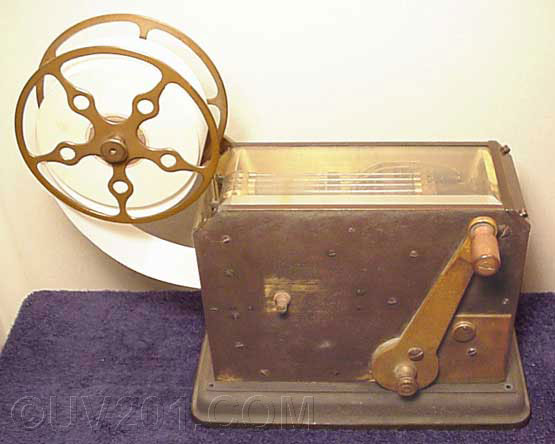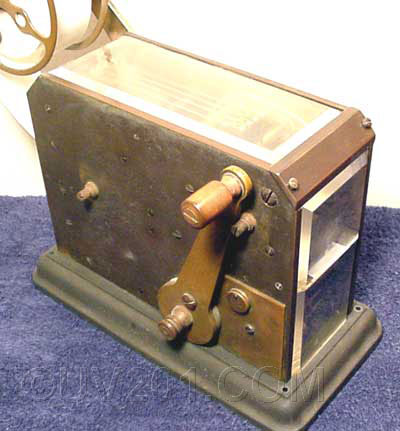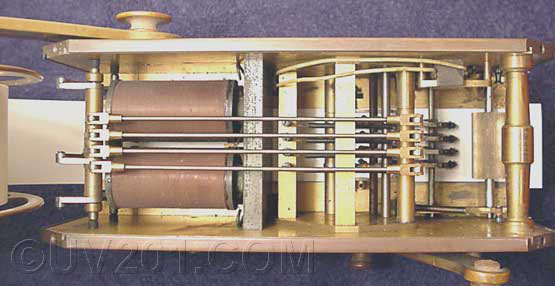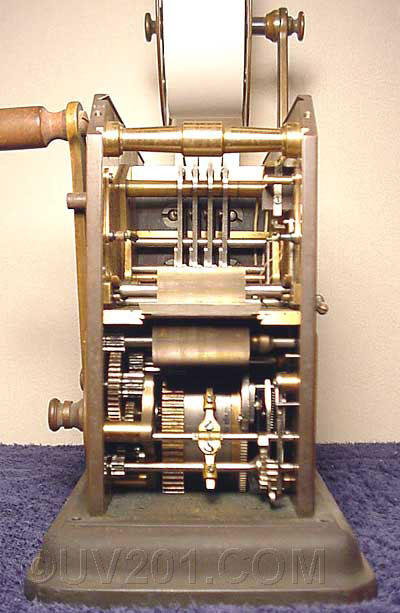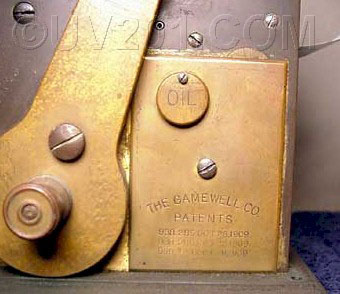|
Gamewell Fire Alarm Telegraph Register |
||
|
|
||
| Fire alarm telegraph
systems came into use in the mid 19th century, and were a primary method
of reporting fire alarms throughout the 20th century. In some
locations, such systems are still in use, though most have been replaced
by modern technology.
The fire alarm telegraph system relied on the familiar red fire alarm boxes located throughout a city or town. These were the transmitters; the device shown here was the receiver (register). Each alarm box contained a code wheel which was unique to the particular box in which it was installed. When the alarm was activated, the code wheel turned and operated a switch. This transmitted the coded pattern over the telegraph system to the receiver in the fire house which punched holes in a moving strip of paper. The pattern of holes served to identify which alarm box had sent the signal and, thus, the location. This register was generally used with a bell to alert the fire fighters on duty. The register shown here was made by the Gamewell company. The nameplate shows 1909 patent dates, so it could not have been made before then. Many of the pieces show the number 104 which may be the serial number, suggesting that the unit is quite early. It relied on a spring-driven motor to move the paper through the punch mechanism. The lever on the side of the unit was used to wind the spring. The mechanism is protected by clear plastic covers. It is unlikely that these covers are original (they would have been glass). The unit shows signs of having been overhauled at some point, and the covers were probably replaced at that time. The base is about 12 by 6 inches, the unit is about 9 inches high (exclusive of the paper spool), and is quite heavy at about 35 lbs. |
||
|
|
||
|
|
||
|
|
||
|
|
